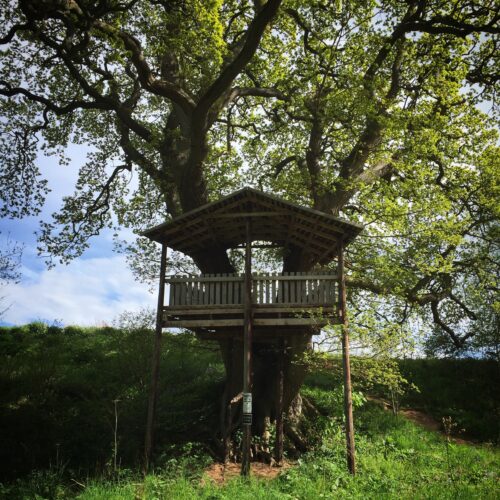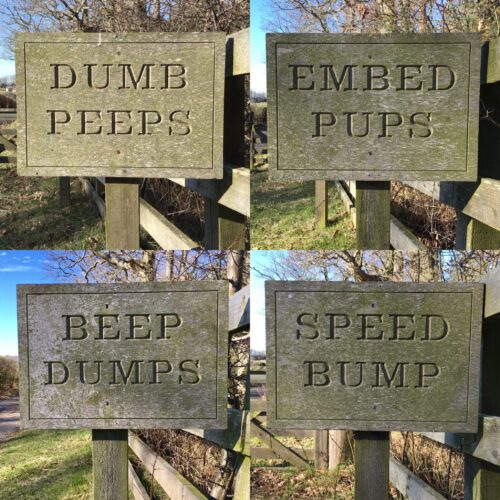Temple
The temple to the west of the steading is the early Victorian portico from Strathleven House, near Dumbarton. It was dismantled during the restoration of the house to its eighteenth-century form by the Scottish Historic Buildings Trust and re-erected here in 2000.



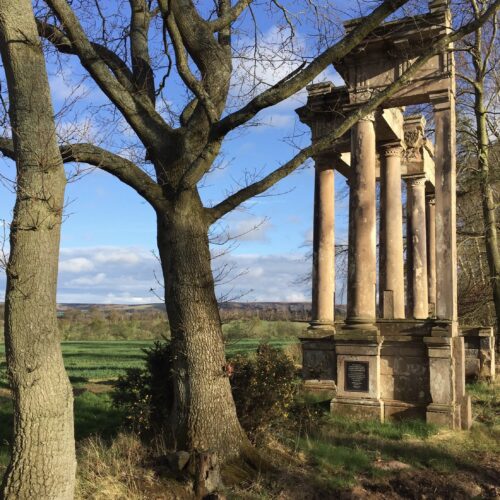
Lime Avenue
Old maps show the lime avenue as the main road from Gifford to Edinburgh. Planted around 1900, it is an extension of the venerable avenue leading to the gates of Yester House in Gifford.






House Field
The field to the north of the house is home to an eccentric variety of objects. The cast iron finial came from the Holyrood Brewery when it was demolished to make way for the Scottish Parliament. The dogs’ headstones were carved by Caroline Webb in Portland stone, in the manner of a war cemetery. A Load of Balls is one of the many ‘home-made’ sculptures around the garden; a title that suggests they are not meant to be taken too seriously. Close by, the slate-mounted inscription Ore stabit is another joke. It’s not Latin: read it as English.







Orchard
Not all the fruit in the orchard is edible. The golden apples were made by the appropriately-named Brian Caster at the Powderhall Bronze foundry in Edinburgh.




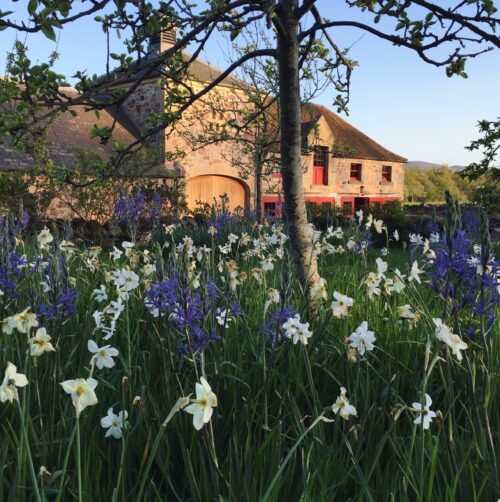
South Garden
The tree trunk erected in the South Garden as an elm monument was found washed up on the estuary at Tyninghame. The ‘bog beds’ around it are about a metre below the level of the field on the other side of the wall and so remain permanently damp. The border alongside the house has a long season, from aconites in late January through to the last fiery leaves of the cotinus in November.




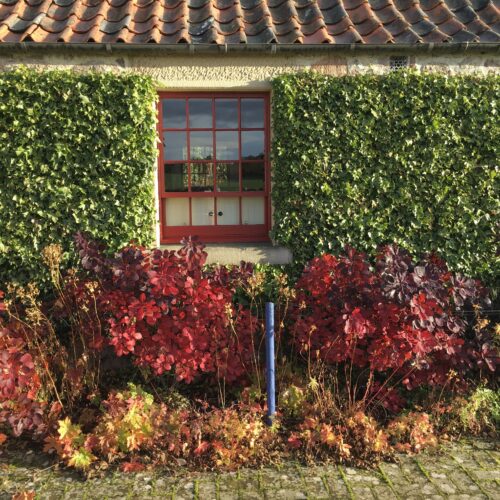




Stable Yard
Where the horticultural gives over to the equestrian

Hall Garden
The old farmhouse is the oldest building at Broadwoodside, dated by lime mortar analysis to about 1680. Its ochre limewash provides a striking background to the planting through all the seasons.


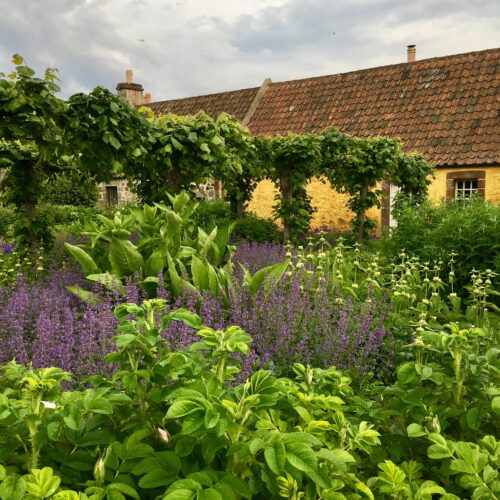




Upper Courtyard
At the heart of the garden are the two enclosed courtyards. The chequerboard layout of the Upper Courtyard was suggested by the perfect square created when the dividing wall was built. The aviary is copied from Arabella Lennox-Boyd’s very grand fruitcages for Ascott House in Buckinghamshire. Its occasional resident is William, an African grey parrot.








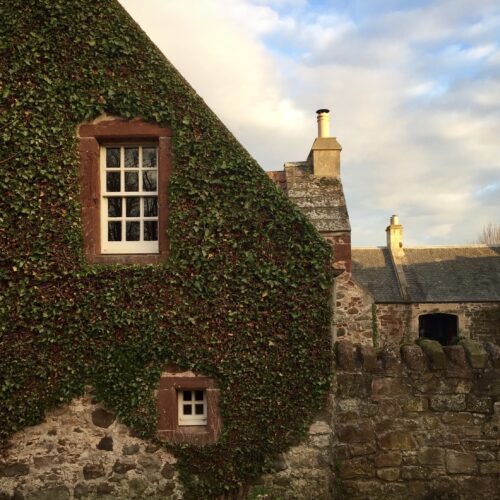
Lower Courtyard
The traditional cruciform layout is paved in flagstones which all came from the floors of a mill in Arbroath that was being converted into flats. They are Carmyllie sandstone, renowned for its fine quality.

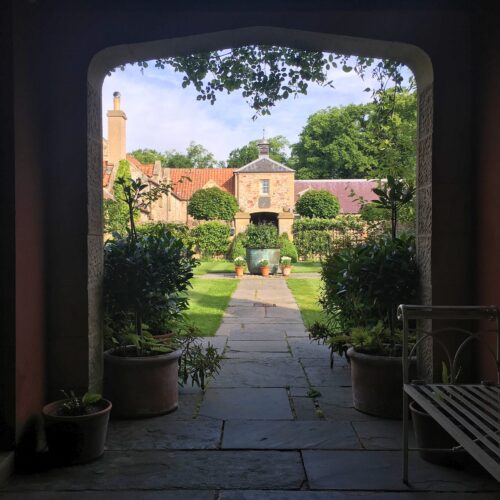


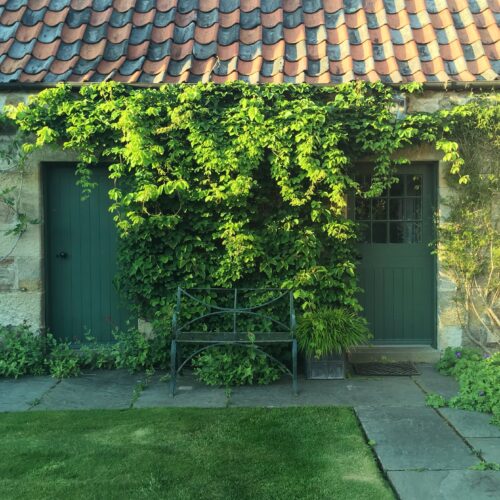
Walled Garden
The willow pond in the Walled Garden is fed by the run-off from the extensive roofs of the steading. The willow hedge is cut back every winter and can grow up to nine feet over the summer months. On either side of the pond and on the terrace above it are the only real ‘flower beds’ in the garden. Vegetables, fruit, flowers for cutting and a greenhouse are found below it.







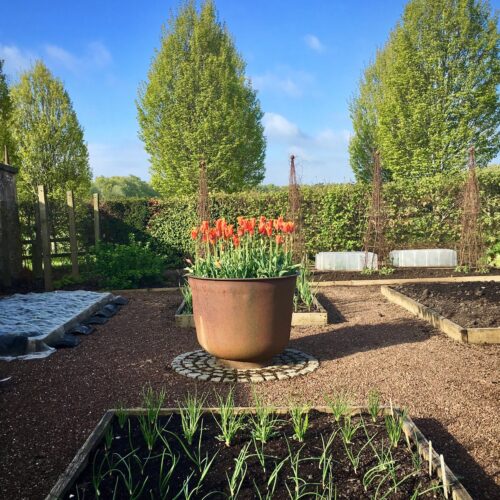

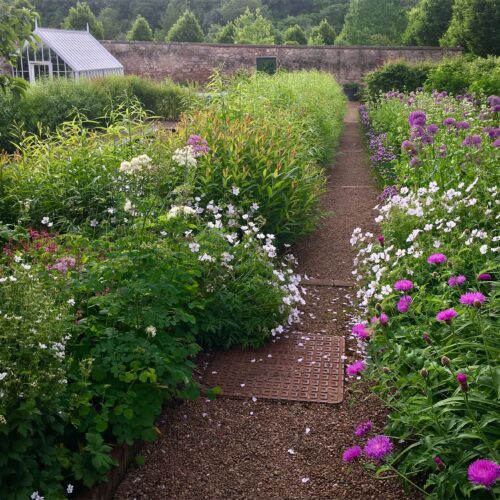


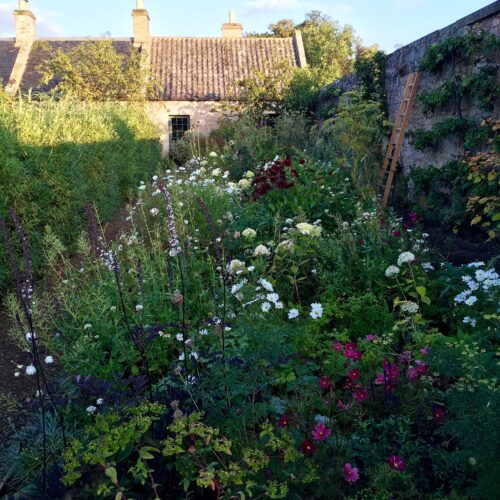
Hornbeam Avenue
The fastigiate trees of the hornbeam avenue were a present from a 90-year-old grandmother. When they were planted in 2001 she said she would never live to see them grow; but she died aged 103 with the avenue all but mature.


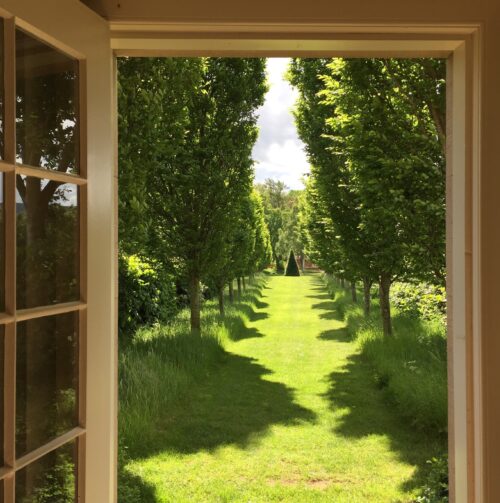


Incidents in the Landscape
There is a lot to be discovered in the outlying areas around the garden.








